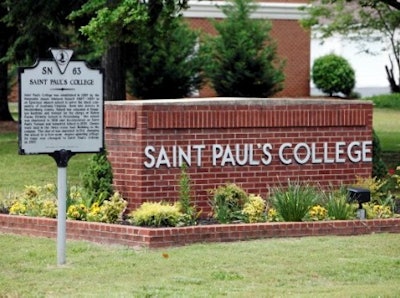 Saint Paul’s College, an HBCU in Lawrenceville, Va., closed its doors this year after 125 years of service.
Saint Paul’s College, an HBCU in Lawrenceville, Va., closed its doors this year after 125 years of service.Facing skeptical customers, declining enrollment, an antiquated financial model that is hemorrhaging money, and new kinds of low-cost competition, some U.S. universities and colleges may be going the way of the music and journalism industries.
Their predicament has become so bad that financial analysts, regulators and bond-rating agencies are beginning to warn that many colleges and universities could close.
“A growing percentage of our colleges and universities are in real financial trouble,” the financial consulting firm Bain & Company concluded in a report—one-third of them, to be exact, according to Bain, which found that these institutions’ operating costs are rising faster than revenues and investment returns can cover them.
That’s because, as enrollments decline and families become more sensitive to price, colleges are cutting deeply into their revenue by giving discounts to attract students. The result is that, even though their sticker prices seem to be ballooning faster than the inflation rate, many of these schools are falling further and further behind.
“As the price keeps going up, within 10 years our price tag will be over $75,000,” said Julie Richardson, dean of admissions at Hampshire College in Amherst, Mass. “That’s a number that begins to concern a lot of people.”
So does Hampshire’s discount rate—the proportion of its tuition revenue that goes back out the door in the form of financial aid—which Richardson said is 46 percent.
More than 150 colleges and universities got failing scores on an annual test of their financial stability by the U.S. Department of Education in results, released this year, that date from 2011. Several have closed, including Saint Paul’s College in Virginia, Lon Morris College in Texas, Atlantic Union College in Massachusetts, Chester College in New Hampshire, and for-profit Chancellor University in Ohio. A few are in bankruptcy.
This trend has been little noticed outside higher education. And inside higher education, some critics contend, colleges are not reacting to it quickly enough.
“Change is needed, and it’s needed now,” the Bain report said. “Still, at the majority of institutions, the pace of change is slower than it needs to be. Plenty of hurdles exist, including the belief that things will return to the way they were. Note: They won’t.”
Robert Zemsky, chairman of the Learning Alliance for Higher Education and the author of a new book proposing educational reforms called Checklist for Change, said academic faculty are part of the problem. He said many hope things will just get better.
“The faculty aren’t convinced that change is necessary,” said Zemsky, who also teaches at Penn’s Graduate School of Education. “We faculty—and it is we faculty—are encamped north of Armageddon. We can sort of look over the horizon and see the chaos.
We’re on the sideline. And that’s terrible that the faculty, writ large, are on the sideline.”
Another dilemma is that the small colleges in the most trouble—the Saint Paul’ses, Lon Morrises and Atlantic Unions—don’t have the clout to reform the system.
“You have a problem, because the top of the industry is doing just fine, thank you,” Zemsky said. “And historically it’s the top of the industry that has led change. So the real question is, how do you get the top of the industry fully engaged in this? And you can’t say, well, you’re going to go out of business. Because, you know, I’m at the University of Pennsylvania. Let me tell you, the one thing I don’t worry about is, Penn isn’t going out of business. Don’t frighten me with that one. That’s not going to work.”
Meanwhile, though the likes of the University of Pennsylvania are also seeing plenty of applicants, college enrollment overall is dropping. It fell 1.8 percent last fall and another 2.3 percent in the spring, according to the National Student Clearinghouse. More than 300 campuses reported that they still had space in their freshman class or for transfer students as recently as July—two months after the close of the admissions season. Private colleges and universities are particularly vulnerable. The bond-rating company Moody’s reports that more than 40 percent of them are experiencing enrollment declines.
One institution, Hope College in Michigan, now pays for half the cost of a plane ticket, up to $300, plus transportation from the airport, housing, and meals for prospective applicants who live outside driving distance just to come and visit.
But most colleges and universities are responding not with airfare, but with deeper and deeper discounts on tuition, which are cutting into their bottom lines. The national average discount rate has swelled to 45 percent, up from 37 percent in 2000, according to the National Association of College and University Business Officers.
This means that, even though tuition has been skyrocketing, families are actually spending 13 percent less on college than they did in 2009, the student-loan company Sallie Mae reports. This may be good news for students and their parents, but, for colleges, the trend is unsustainable, according to the Council of Independent Colleges.
“The old way of doing business is not going to sustain itself into the future,” said Zemsky. “You need somebody who stands up and says, ‘We can do better. Let’s get started.’ Absent that, we’re in for some really unpleasant times in higher education.”















